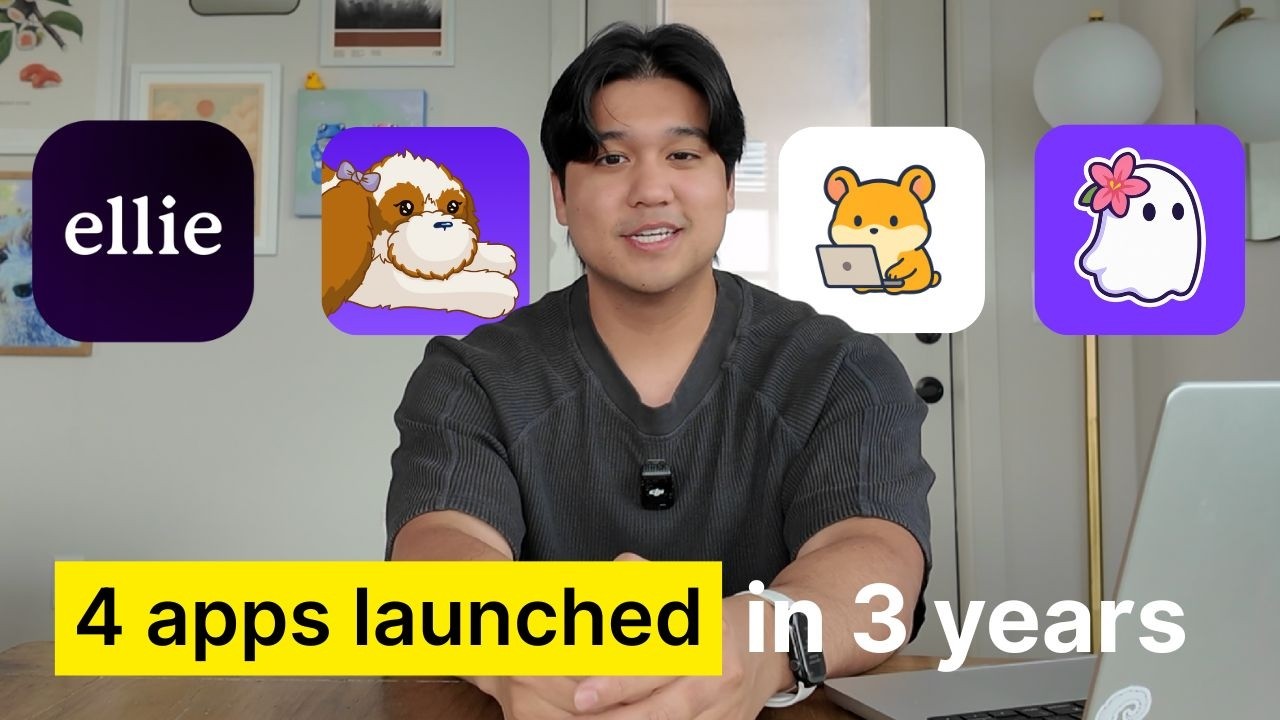Chris, a productivity app developer, shares a detailed framework for launching apps that includes setting up an early waitlist page, integrating analytics and user feedback tools, establishing automated email sequences, and creating polished app store listings and landing pages. He emphasizes the importance of early preparation and data-driven decisions to improve user retention and maximize launch impact, using tools like Framer, FormSpark, and Loops throughout the process.
In this video, Chris, a productivity app developer, shares his comprehensive framework for launching new apps, based on his experience building four apps in three years. He begins by emphasizing the importance of setting up a waitlist page early in the process, ideally before even starting development. This simple page, featuring an app screenshot and an email signup form, helps gauge user interest, build a list of beta testers, and provides an initial user base for launch. Chris uses Framer to create these landing pages quickly and integrates email collection tools like FormSpark for seamless signup management.
The next critical step Chris highlights is implementing analytics within the app. Many developers delay this, thinking it’s unnecessary without users, but Chris stresses that early analytics are vital for understanding user behavior and identifying why users might churn. He recommends setting this up early to make informed product decisions and improve the app based on real data. Alongside analytics, he advises integrating a feedback board where users can submit and upvote feature requests. This direct user input often reveals unexpected priorities and helps guide the product roadmap, significantly reducing churn by building what users truly want.
Chris also discusses the importance of setting up an email system beyond just a basic welcome email. He advocates for an email sequencing system that can send automated or manual emails based on user behavior, such as reminders or feature highlights. This approach helps improve user retention by keeping users engaged and informed about the app’s capabilities. He uses a tool called Loops for this purpose, praising its user-friendly interface and responsive support, and encourages developers to set up such systems early even if they don’t plan to use them immediately.
Another major focus is the app store listing, especially for iOS apps. Chris stresses that many developers underestimate the power of a well-crafted app store presence. He advises spending significant time—three to four days—on creating high-quality screenshots, compelling titles, descriptions, and tags. These elements are crucial because they form the first impression potential users have and can greatly influence download rates. He also points out that Apple provides an initial boost in visibility after launch, making it essential to have a polished listing to capitalize on this opportunity.
Finally, Chris talks about building a dedicated landing page to showcase the app and drive downloads, separate from the initial waitlist page. He typically spends about a week on this, using Framer again, and emphasizes that while it can be refined over time, having a solid landing page at launch is important. Regarding the timing of the launch, Chris relies on a gut feeling based on beta test analytics, looking for signs that users are sticking with the app. His personal launch strategy is low-key, involving social media announcements and emailing the waitlist, though he outlines how a bigger launch could involve coordinated social media campaigns, Product Hunt, and community engagement. Overall, the video provides a practical, step-by-step guide to preparing for a successful app launch.
